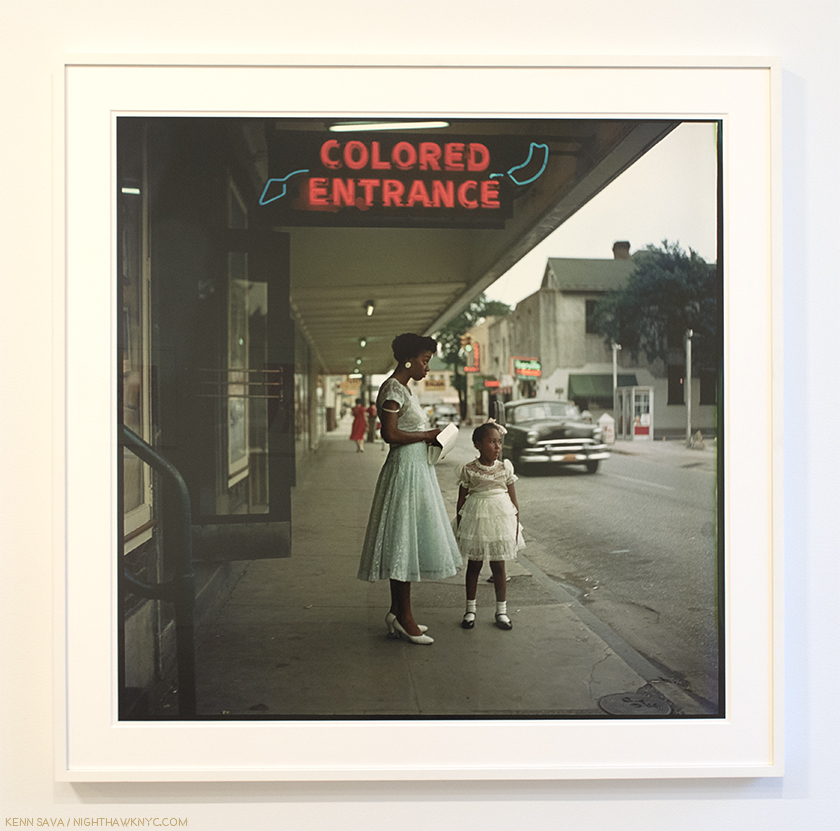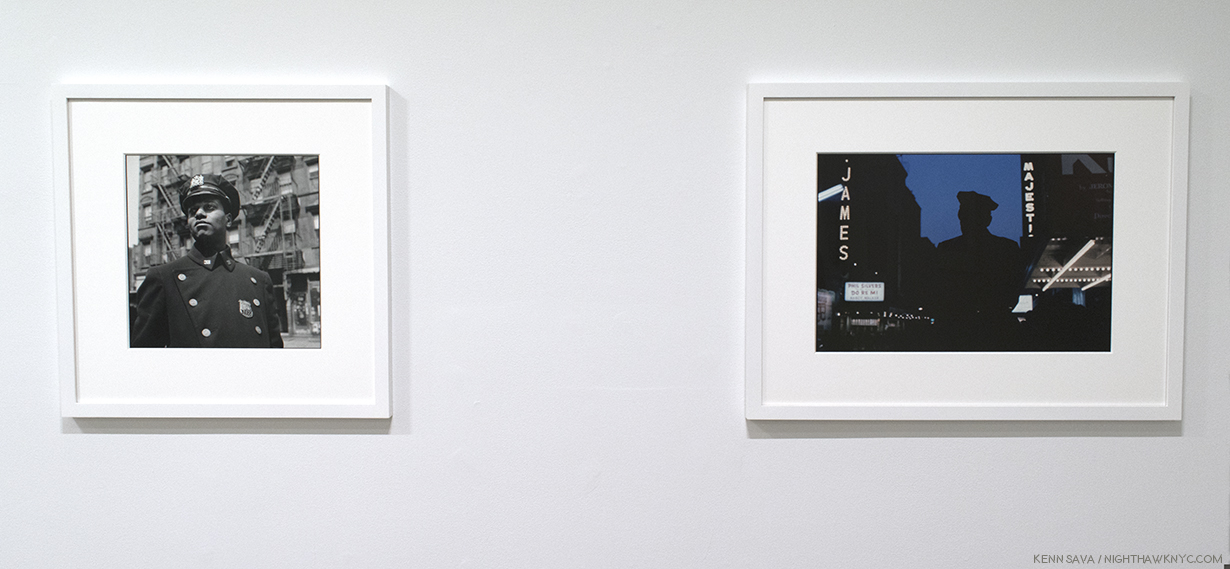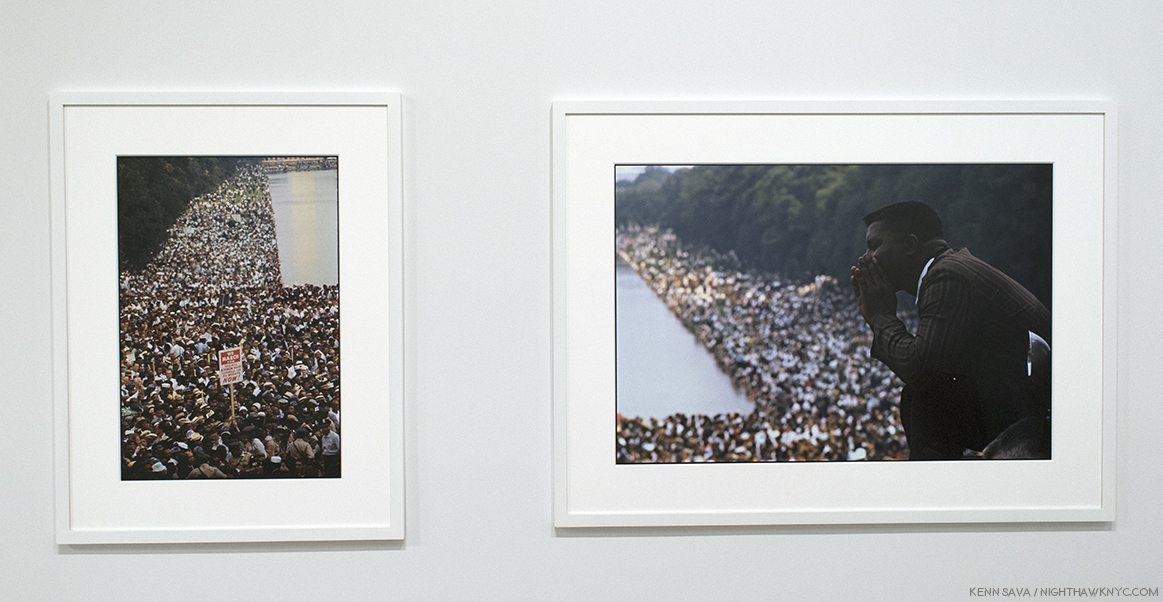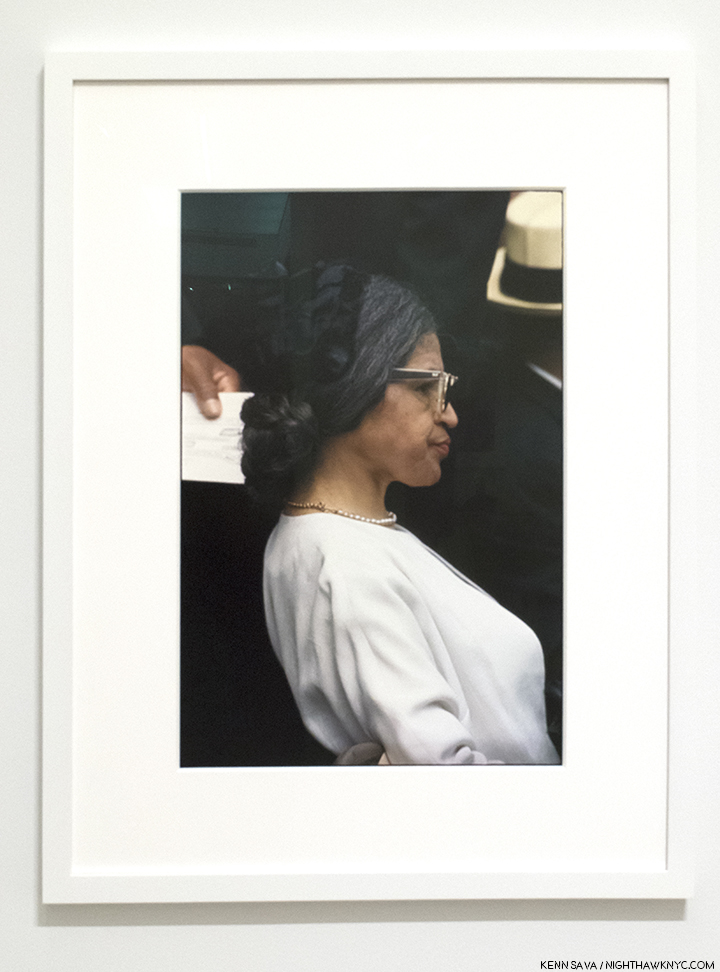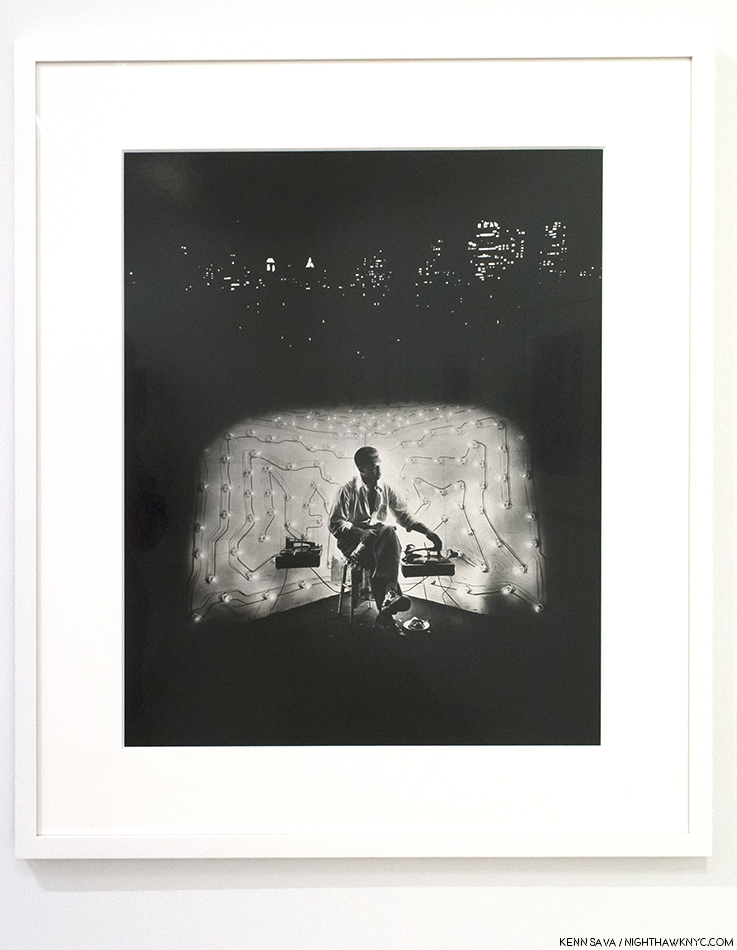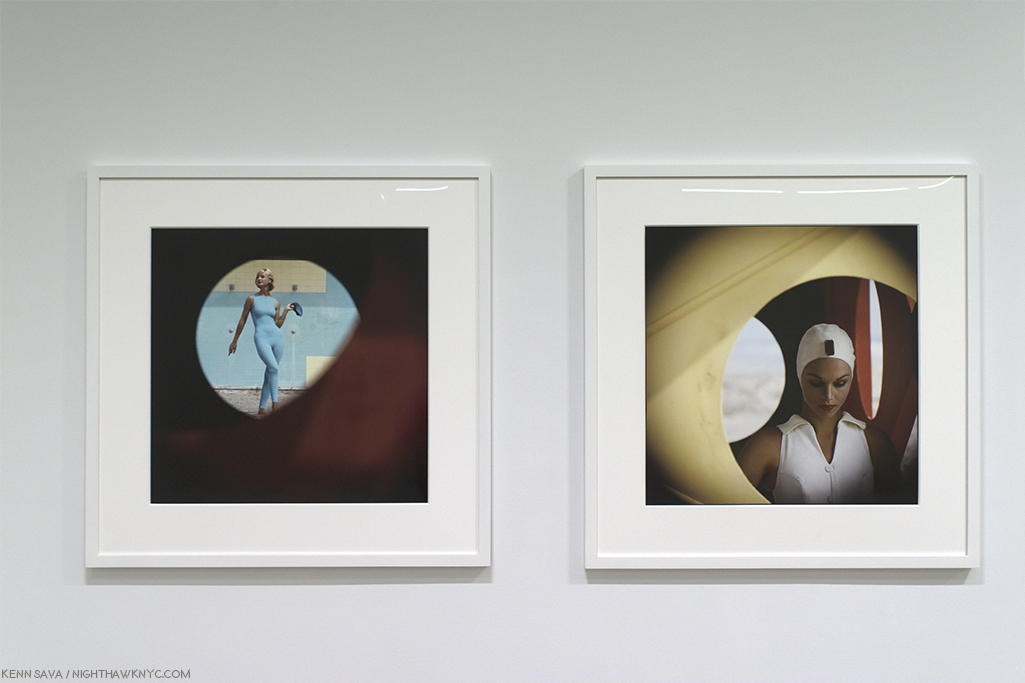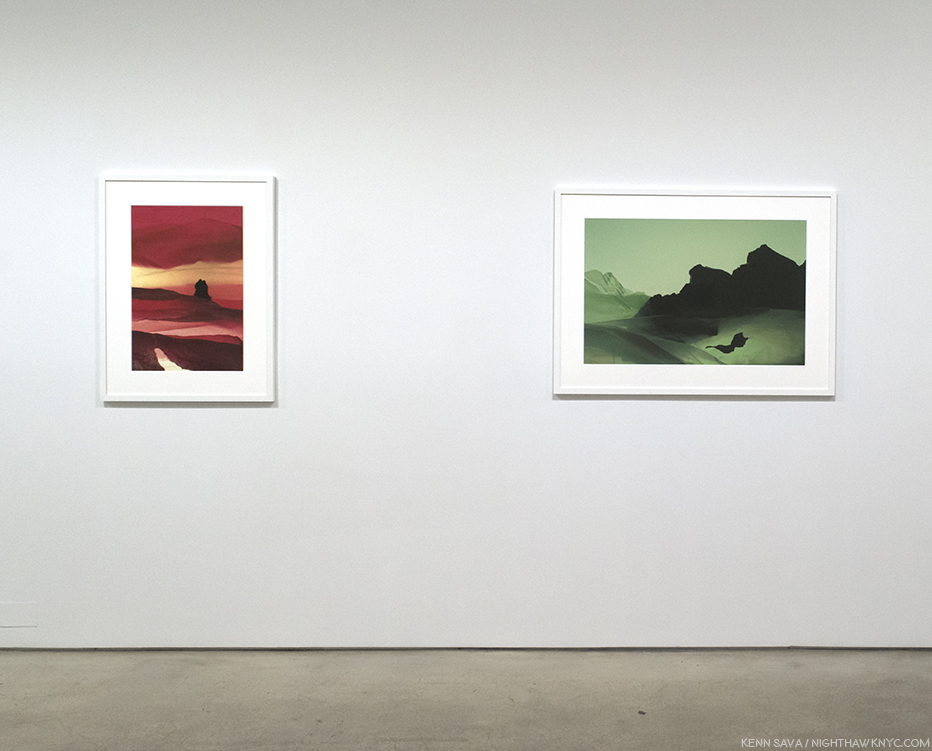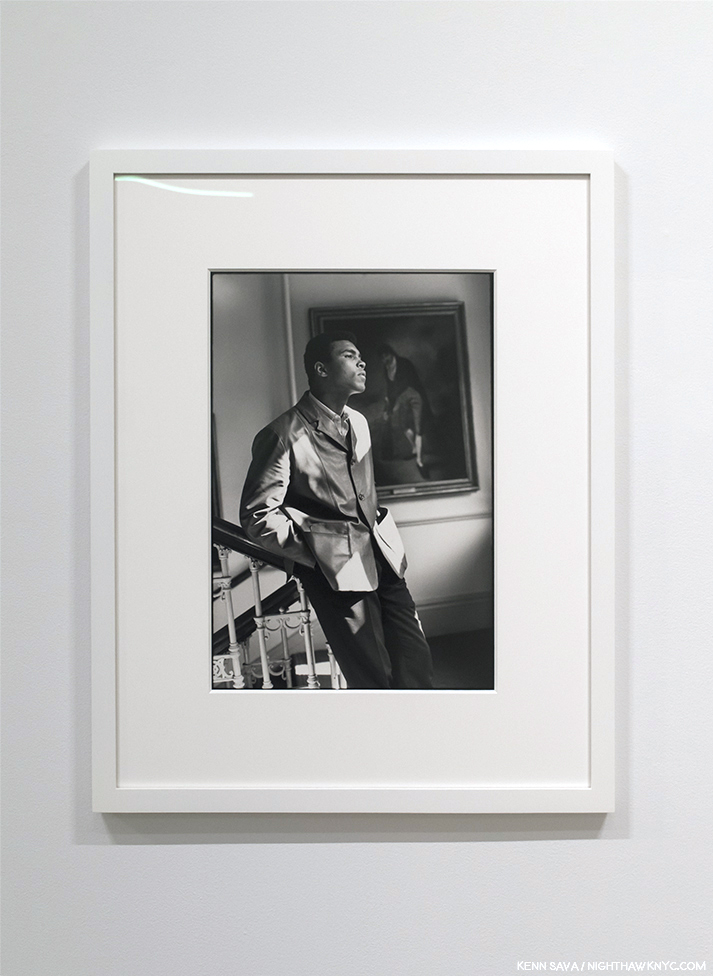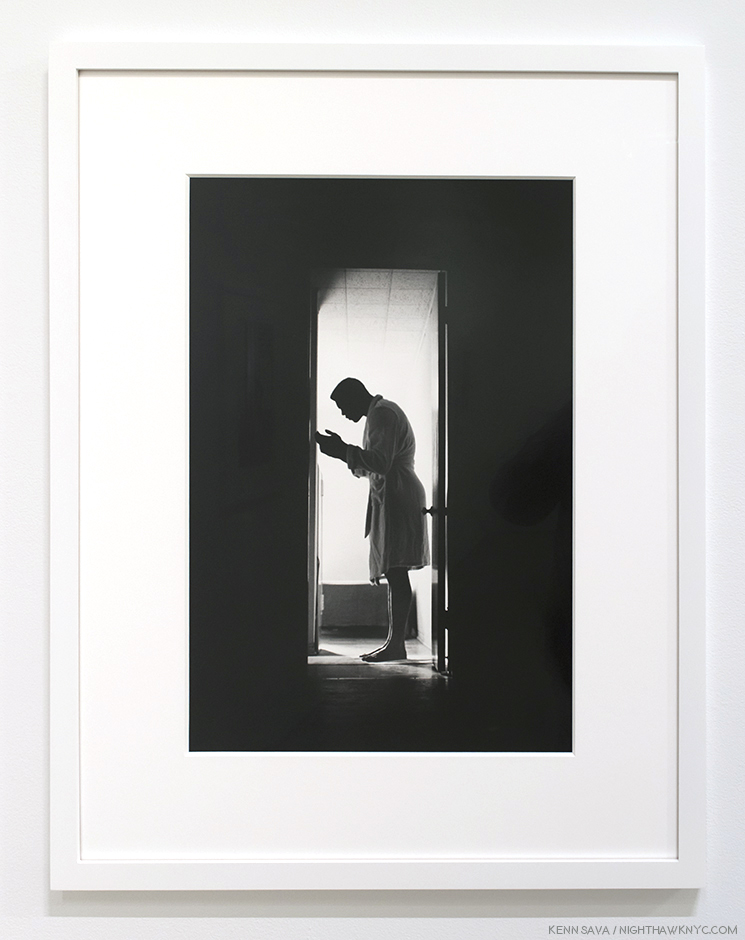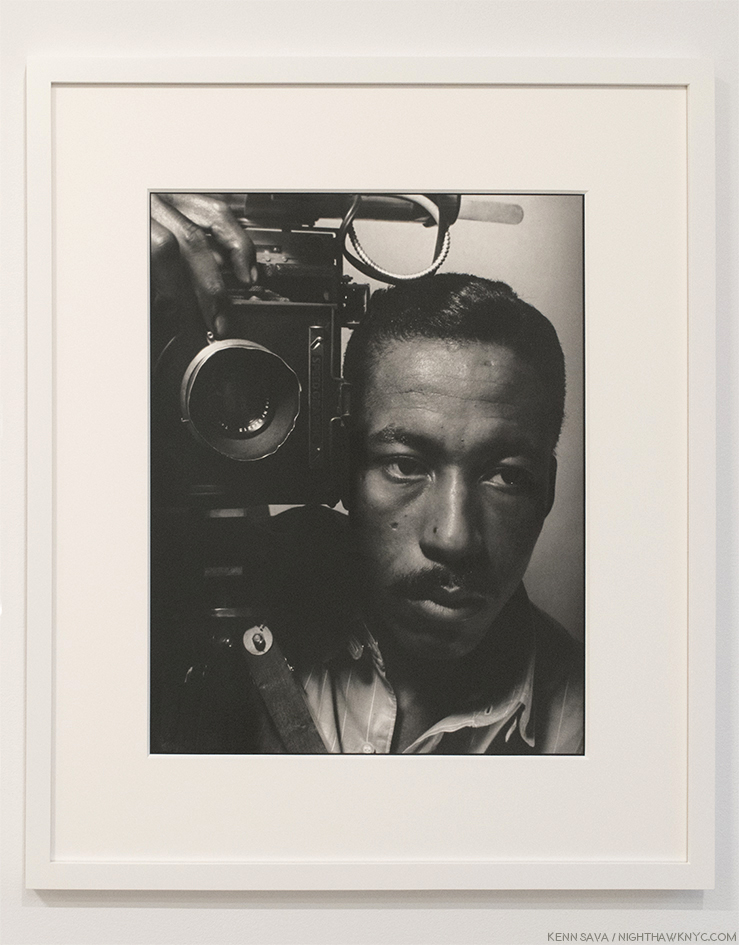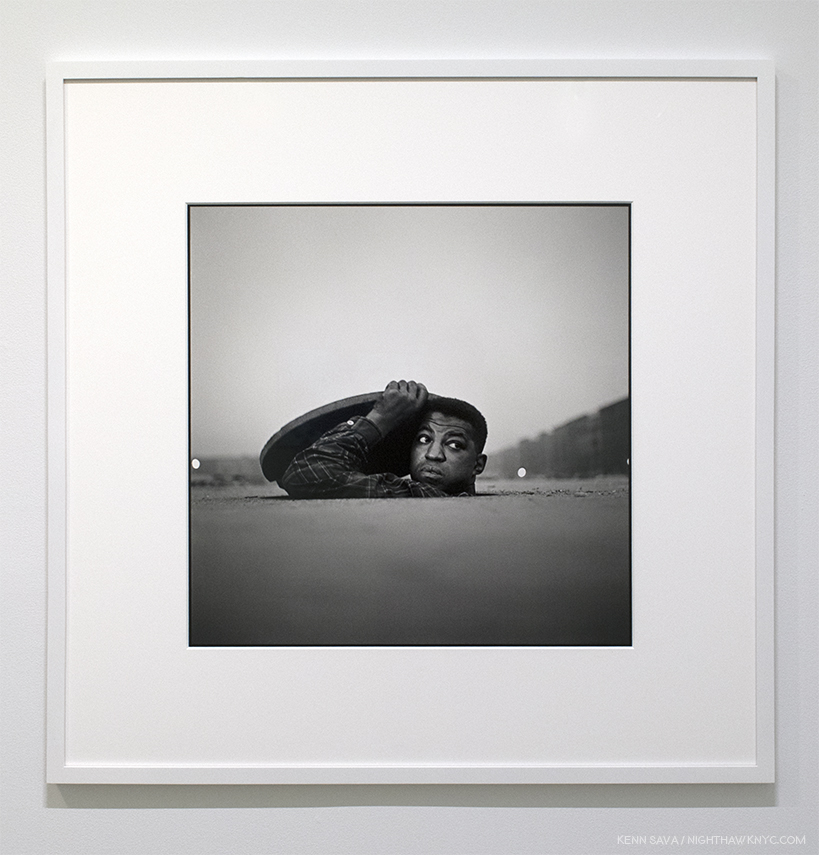
The Invisible Man, Harlem, New York, 1952. One of Gordon Parks’ most iconic Photographs, among many other great ones.
The renowned 20th Century Photographer/ Filmmaker/ Painter/ Writer/ Musician & Composer/ (I keep finding more talents, so I’ll leave this one open for the next one)… “Renaissance man,” Gordon Parks (1912-2006) was a self-taught Photographer who bought his first camera from a pawn shop at 25. He went on to create an extraordinary body of work over the next 60 years that was marked as much by its range as by its quality. Along the way, he became, perhaps, best known for two of his films that are legendary in different ways. The semi-autobiographical The Learning Tree, 1969, achieved and retains critical acclaim, and Shaft, 1971, a much bigger commercial success, remains an influential cult classic.
After getting that first camera, Gordon Parks promptly became good enough with it to gain employment with the Farm Security Administration (FSA) until it closed in 1943. His subsequent work as a freelancer led to acclaim and his becoming the first African American staff Photographer and Writer at Life Magazine, then the #1 Photojournalist publication in the world. After 2 decades at Life, he turned his own best-selling novel, The Learning Tree, into a 1969 movie that was one of the first 25 films selected for permanent preservation by the National Film Registry of the Library of Congress1. Two years later, he followed it up with the wildly popular film Shaft, made for $500,000, which was added to the Library of Congress’ Preservation List in 2000. That same year, Gordon Parks was named one of 26 “Living Legends” by the Library of Congress. All the while, he would continue to create Photographs and explore Photography until his death six years later.
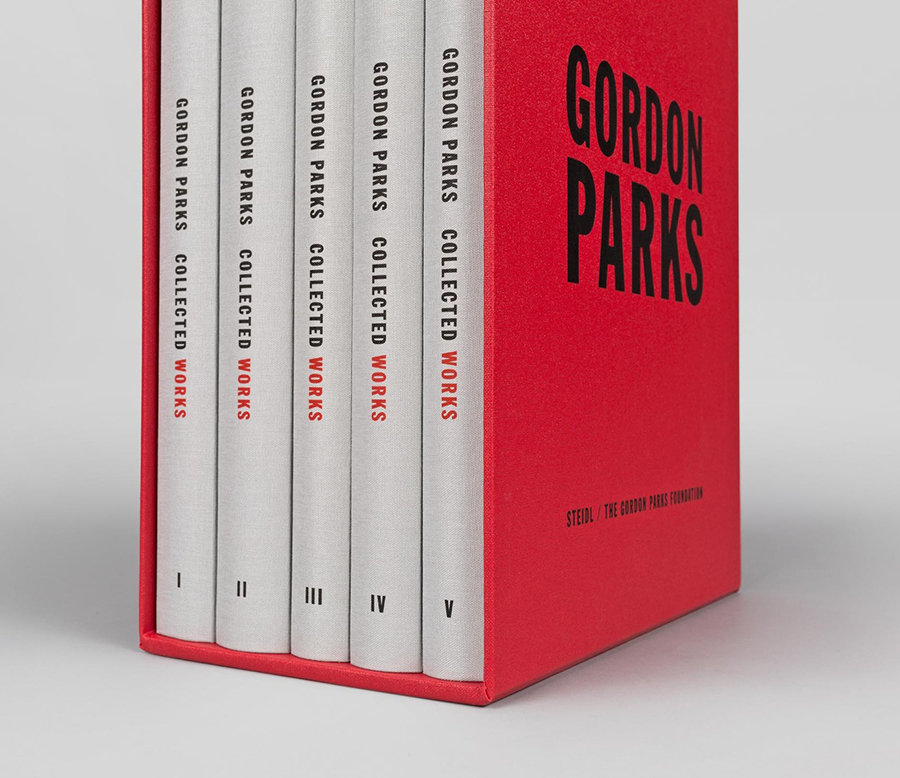
Monumental. Gordon Parks Collected Works, 2012, published by Steidl and still in print. Photo by Steidl.
After his passing in March, 2006, the Gordon Parks Foundation has been carrying on promoting his work, with particular attention to his Photography. Though renowned during his lifetime, his body of Photographs has seemed to be somewhat overlooked in the plethora of Photographs coming before the world these days. To reverse this, in 2012, the Foundation and the world’s leading Publisher of Photography Books, Steidl, produced an exceptional five-volume set of Gordon Parks’ Photographs entitled Collected Works that can found at quite reasonable prices online. But, seeing the real thing in person, as with most Art, has a power all its own.
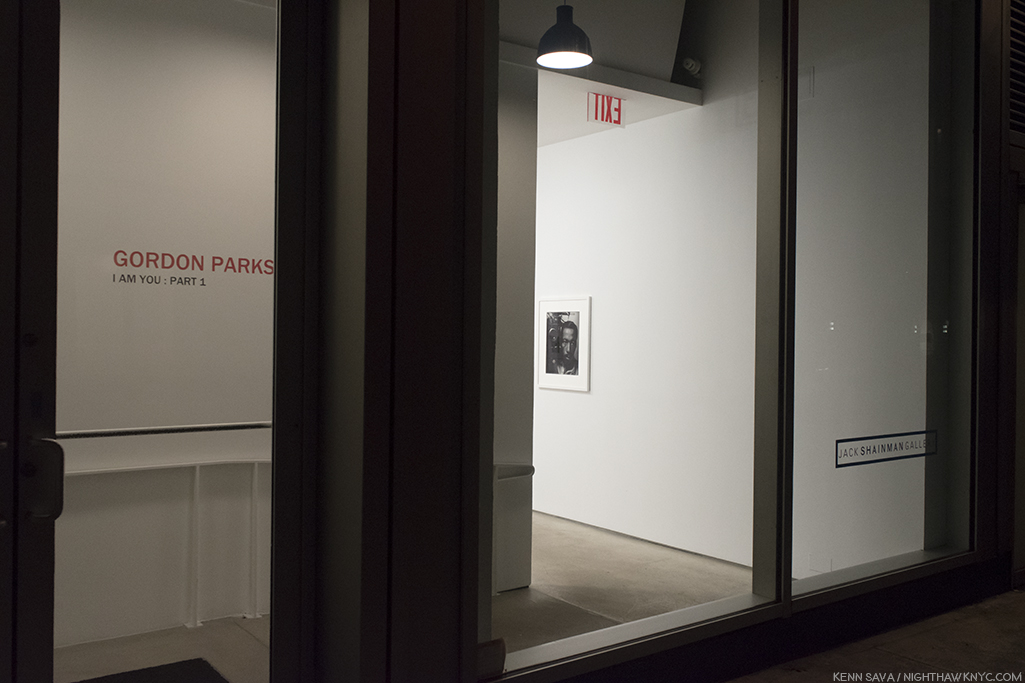
Keeping the light burning. It was still getting dark before 5pm as I stood outside Jack Shainman on West 24th Street when Part 1 opened in early January. And, when Part 2 opened on February 15th.
To this end, Jack Shainman Gallery mounted two shows, Gordon Parks: I Am You Part 1 & 2, between January 11th through March 24th, that provided a beautiful and succinct overview of some of Mr. Parks’ finest work, and included a number of surprises.
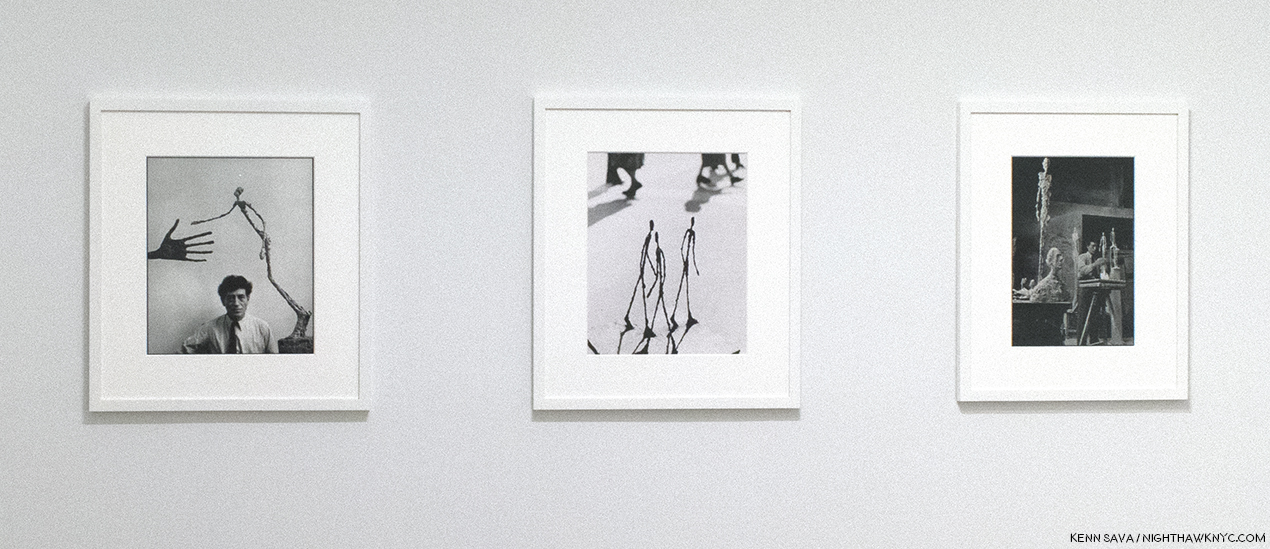
An unexpected dialogue. 3 Photographs of Alberto Giacometti and his work- Falling Man, Strollers, and Untitled left to right, Paris, 1951.
For those who know his early work for the Farm Security Administration (FSA)-
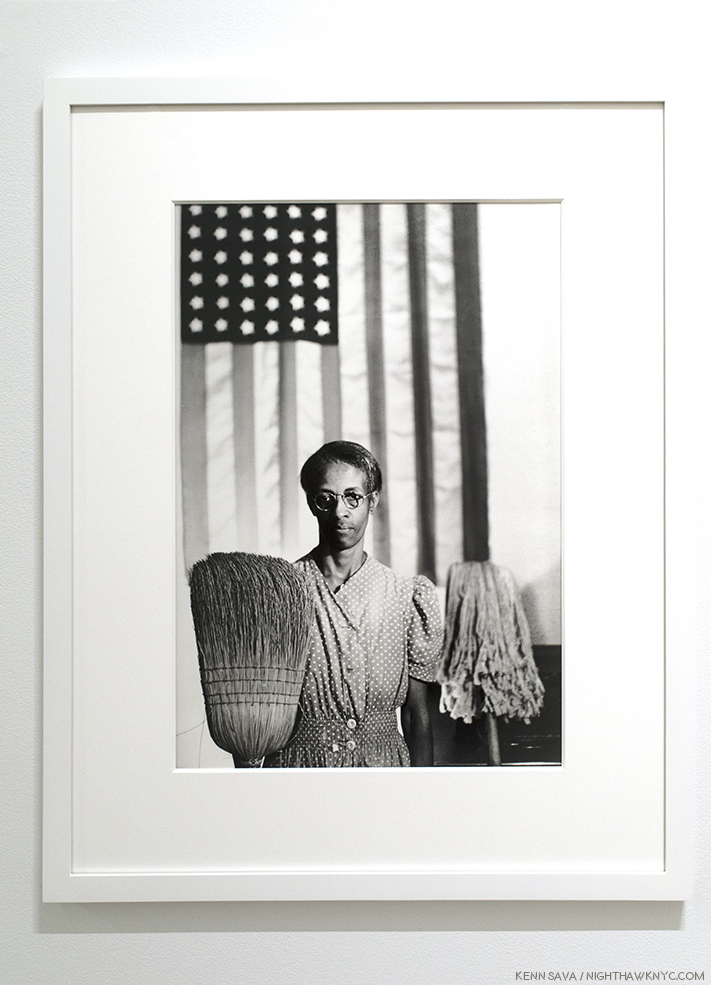
American Gothic, Washington, D.C., 1942, meanwhile, the “other” one, by Grant Wood, is on display at the Whitney right now, about 15 blocks south.
Or, as a PhotoJournalist-
or his work documenting the Civil Rights movement-
Or, those that are hard to classify-
Gordon Park’s work as a Fashion Photographer
and his later, color, works that explored much more freely, may come as a surprise.
In an age where there are far too many Photos taken of celebrities, I continually find myself stopped by the images he took of Muhammad Ali. Many of his shots of the Champ are somewhat unorthodox, and almost all of them have an intimacy not seen elsewhere. So well done are they, so natural, it’s extremely hard to tell if Mr. Ali is posing or was captured in the moment.
And this, seen last year-
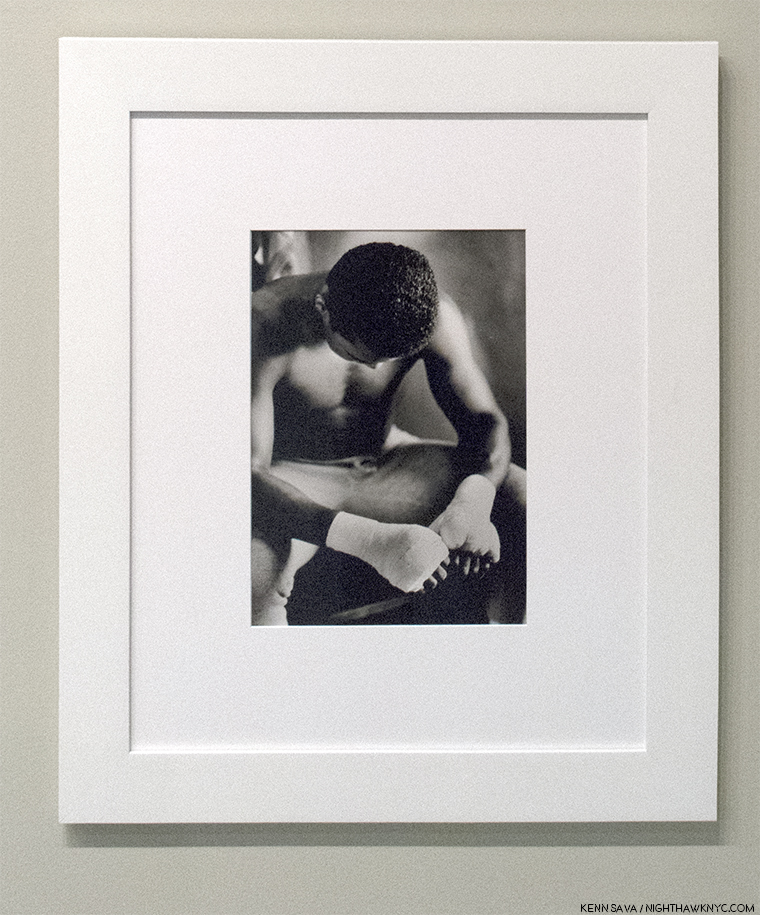
Muhammad Ali (Wrapped Hands), 1966, as seen at the Weinstein Gallery, Minneapolis, AIPAD Booth in March, 2017
Even over two shows, given the length of his career and the extraordinary wide range of his work, it’s possible to only get a taste of his accomplishment. Luckily, the Steidl set, (which is also available, minus the slipcase, in a “Study Edition”), is around to provide a complete look. Still, my takeaway after both shows is that it’s hard to find a genre of Photography at which Gordon Parks did not excel, one in which he did not create memorable works of lasting strength, significance and beauty.
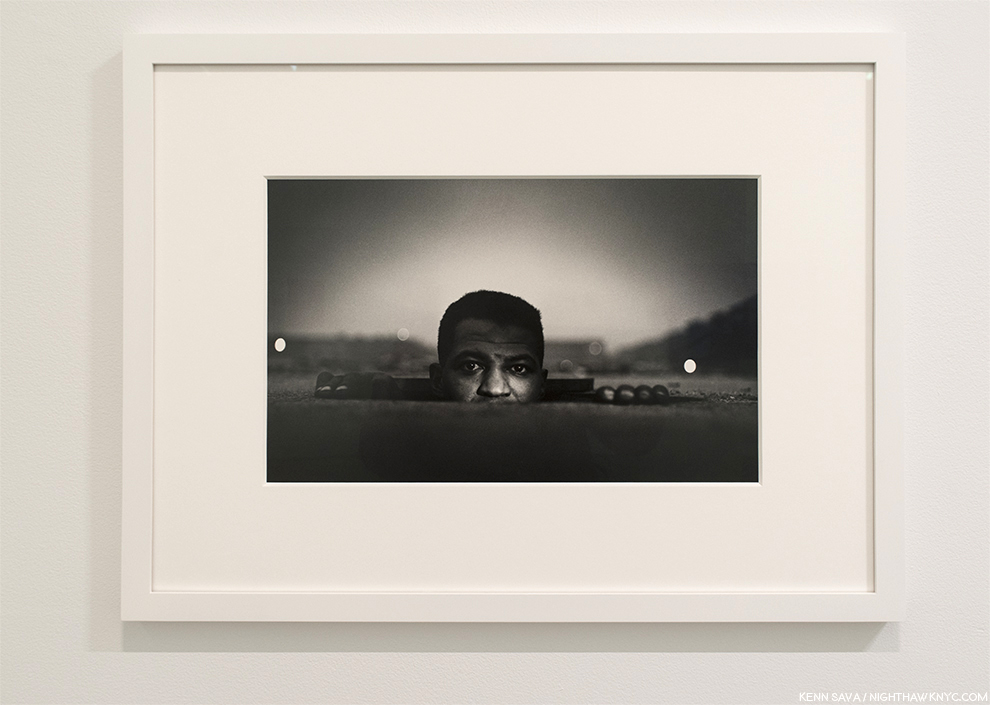
Emerging Man, Harlem, New York, 1952. Along with American Gothic, two of his most well-known Photographs.
There are some interesting parallels, and divergences, in the Photographic careers of Walker Evans (1903-1975) and Gordon Parks2. Both worked for the FSA, both went on to work for magazines, though Evans was, of course, white, both Photographed African-Americans, and both explored color Photography as their careers went on. But, Evans found a champion at the Museum of Modern Art in Lincoln Kirstein, which resulted in his work being given a solo show in 1933 and a breakthrough show, the now legendary “Walker Evans: American Photographs,” in 1938, the catalog for which is still considered a benchmark for all subsequent PhotoBooks. Gordon Parks has never been given a solo show in a NYC Museum (as far as I know), and wasn’t included in a MoMA group show until 1965. MoMA shows 17 Photographs by Mr. Parks in their collection. The Met shows O N E, the Whitney shows 5. In contrast, MoMA shows 205 works by Walker Evans, who has been included in 66 of its exhibitions, and The Met now owns the Walker Evans Archive.
“In my youth, violence became my enemy…Photography, Writing, Music and Film are the weapons I use against it.”
Gordon Parks, quoted on the cover of the documentary Half Past Autumn.
Looking at his work, Gordon Parks’ Photographs look every bit as relevant, and as good, today as they ever have. I think it’s going to be a very long time before that changes.
*- Soundtrack for this Post is “Do Your Thing,” by Isaac Hayes from the Shaft Soundtrack. The late Mr. Hayes performs it here, at the Glastonbury Festival in 2002-
NighthawkNYC.com has been entirely self-funded & ad-free for over 7 years, during which over 275 full length pieces have been published! If you’ve found it worthwhile, PLEASE donate to allow me to continue below. Thank you, Kenn.
You can also support it by buying Art, Art & Photography books, and Music from my collection! Books may be found here. Music here and here.
Written & photographed by Kenn Sava for nighthawknyc.com unless otherwise credited. To send comments, thoughts, feedback or propositions click here. Click the white box on the upper right for the archives or to search them. Subscribe to be notified of new Posts below. Your information will be used for no other purpose.

